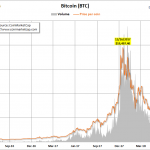The announcement from Fed Chair Janet Yellen that interest rates will not be raised in the near term from its current near-zero level has finally pulled back the curtain on ongoing speculation in the financial markets.
Market pundits had mixed opinions about the rate hike. While some advocated an immediate rate increase, pointing out that the U.S. economy is prepared for an uplift, others were against it saying an increase will slow down the rate of overall economic growth.
The decision to not increase the rates by the Fed stems from the concept of the “global village” economy. The Fed chair cited weak global economy as the primary reason for not increasing the rates. The steady decline in the U.S. unemployment rate and a marked increase in domestic spending were actually paving the way for a Fed rate hike.
But the recent weakness in the Chinese economy has disrupted the balance of the global markets, with all major indexes taking a beating. The loss of momentum in the Euro zone economy welled up global woes.
Will the Fed Lift Rates in the Near Future?
A rate hike, in this context, would have added to the turmoil in the global markets. The U.S. investors would have been tempted to withdraw funds from the choppy foreign markets and invest in domestic funds. This could have further weakened the global economy and lowered U.S. exports, which are as it is hurt by a stronger dollar against a basket of other currencies.
However, the Fed might rethink its monetary policy when they meet again in October and December this year. A hike will be imminent if labor-market conditions show “further improvement” and the economy achieves the targeted inflation rate. The global markets will also have a few more months to strengthen themselves.
Capital Intensive Industries to Benefit
The capital intensive industries will definitely welcome the no-hike decision as they need to take recourse to the markets fairly constantly. In particular, the mature capital intensive U.S. based utilities have hitherto benefited from zero-level interest rates and the volatility in the markets that drove investors to the utility corner. A rate hike would have definitely brought an end to all that.
The U.S. electric utilities are also currently under intense pressure to meet regulatory requirements pertaining to environmental standards. The finalized version of the Clean Power Plan, per the U.S. Environmental Protection Agency, calls for CO2 reduction of 28% by 2025 and 32% by 2030, from 2005 levels.












Leave A Comment